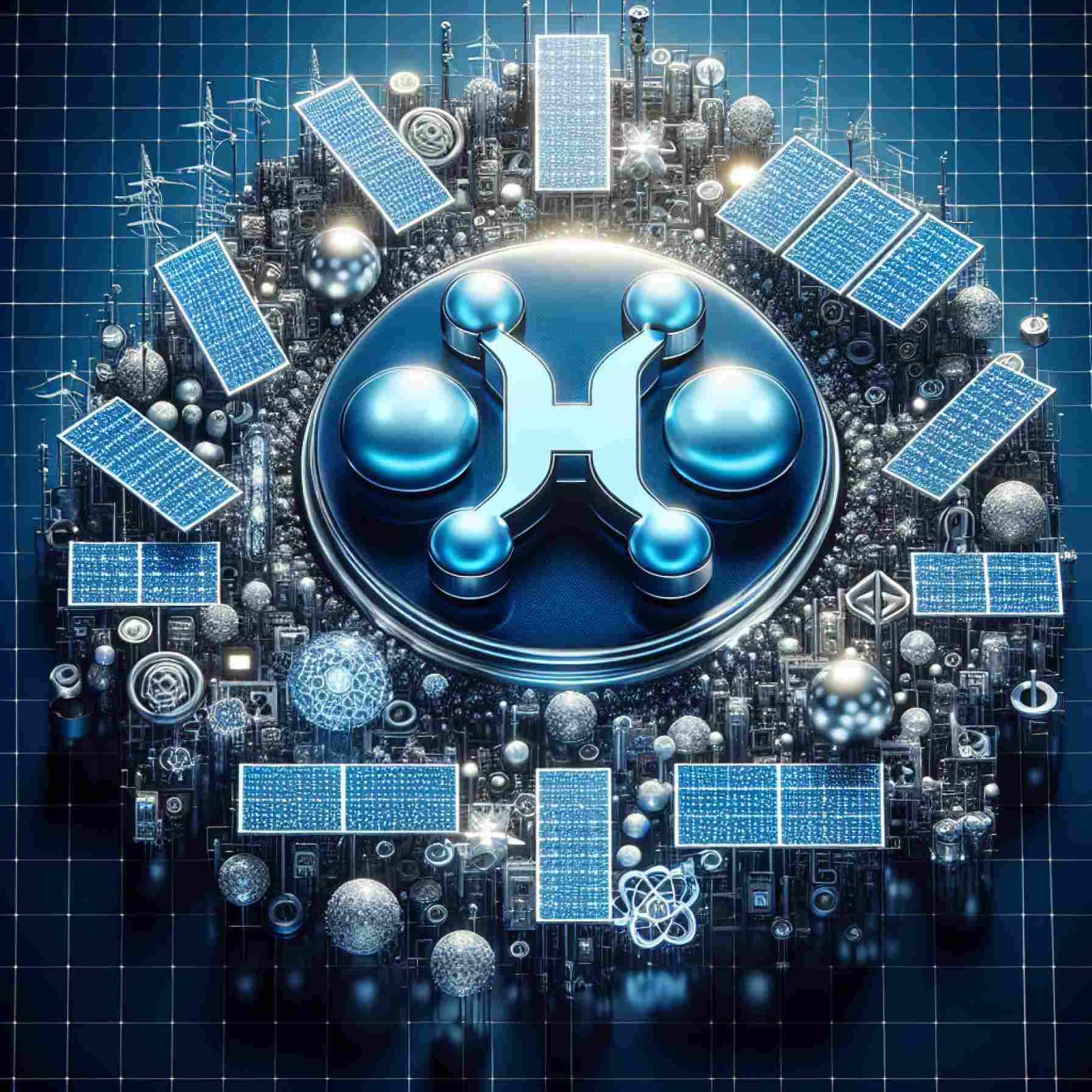- Revolutionary photocatalytic water splitting using advanced Janus materials promises enhanced hydrogen production efficiency.
- The Janus structure features an inherent electrical field for consistent performance across various pH levels, transcending traditional photocatalyst limits.
- This cutting-edge development doubles solar-to-hydrogen (STH) efficiency, paving the way for more effective solar energy harnessing.
- Aim to enable solar farms worldwide to reliably adapt to water quality changes and optimize energy production.
- Research led by Wei-Qing Huang is focused on scaling technology, ensuring material durability, and database expansion for discovering new catalysts.
- The innovation signals a significant leap toward large-scale, carbon-neutral hydrogen production.
- This advancement represents a critical step toward a sustainable and attainable clean energy future.
A shimmering horizon of solar panels stretches into the distance, each absorbing sunlight and transforming it into a cleaner future. This vision of green energy draws closer, thanks to cutting-edge advancements in materials science promising to reshape hydrogen production.
Hydrogen, renowned for its potential as a carbon-neutral energy source, still battles an ironic enemy: its own production. Most hydrogen today is shackled to methane, releasing carbon dioxide equivalent to traditional fossil fuels. Enter photocatalytic water splitting, a promising technology that confronts the inefficiencies inhibiting hydrogen’s renewable takeover.
The game-changer? An ultrathin, two-dimensional material, crafted with an asymmetric Janus structure. This ingenious design creates an inherent electrical field through out-of-plane polarization, optimizing water splitting across a wide range of pH levels. Traditional photocatalysts often falter in varying acidity, but this Janus material shatters those boundaries, performing consistently from neutral to alkaline conditions.
The brilliance of these advancements is captured in how the Janus material stacks in optimized layers. Such structure enables it to surpass prior photocatalytic limits, effectively doubling the solar-to-hydrogen (STH) efficiency of its predecessors. It’s akin to discovering the key to an energy vault long assumed locked.
Imagine solar farms adorning landscapes worldwide, equipped not only with the power to adapt to water quality changes but also supercharged to harvest twice the energy from every ray of sunlight. This potential revolution looms large for regions bereft of robust infrastructure, where every drop of cleaner energy counts.
Researchers, led by the innovative Wei-Qing Huang, are relentlessly working toward scaling this technology for real-world applications. Alongside ensuring the material’s durability in diverse environments, they’re assembling a database to unearth further potential catalysts. This exploration into uncharted materials aims to propel photocatalytic efficiency to new heights.
Such advances signal a promising leap toward large-scale hydrogen production, paving the way for a sustainable energy future. In essence, it’s not just about harnessing the sun; it’s about doing so with unprecedented efficiency and adaptability.
As science marches forward, breakthroughs like these bring us ever closer to an era where clean energy is not merely an aspiration, but an attainable reality. The sun, after all, is shining, waiting to be harnessed with newfound brilliance.
Revolutionary Breakthroughs in Photocatalytic Hydrogen Production: What You Need to Know
Introduction
The promise of clean, sustainable energy is more than just a dream—it’s an imminent reality, driven by the innovative integration of advanced materials in hydrogen production. As the world grapples with the transition to a carbon-neutral future, hydrogen stands out as a pivotal component in this shift. However, traditional methods of hydrogen production tether it to methane, inadvertently releasing significant carbon emissions. A cutting-edge solution steps into this narrative—photocatalytic water splitting enhanced by an innovative ultrathin, two-dimensional material with Janus structures—poised to revolutionize hydrogen’s role in the energy landscape.
What Makes the Janus Material Game-Changing?
1. Asymmetric Structure: This new material possesses an asymmetric Janus structure that creates an electric field through out-of-plane polarization, enhancing its ability to split water efficiently across various pH levels—from neutral to alkaline.
2. Stacked Layers Optimization: The stacking of these materials in optimal layers allows them to surpass traditional photocatalytic limits significantly, doubling the solar-to-hydrogen (STH) efficiency.
3. Adaptability and Efficiency: Unlike many existing photocatalysts, the Janus material maintains high performance in varied aqueous environments, making it versatile for multiple applications.
For more on hydrogen and renewable energy breakthroughs, visit U.S. Department of Energy.
How-To Steps for Understanding Photocatalytic Hydrogen Production
1. Understand the Basics: Familiarize yourself with basic chemistry concepts, such as water splitting, photocatalysis, and hydrogen production processes.
2. Research Materials: Explore innovative materials like Janus structures and their role in enhancing photocatalytic reactions.
3. Keep Up With Industry Trends: Stay updated on the latest breakthroughs in materials science that improve STH efficiency.
Pros & Cons of Photocatalytic Water Splitting
Pros:
– Environmentally Friendly: Minimal carbon emissions compared to conventional hydrogen production.
– High Efficiency: Enhanced STH efficiency means more hydrogen with less energy.
– Versatility: Adaptable to various water qualities and conditions without efficiency loss.
Cons:
– Scalability Challenges: Although promising, scaling such technologies to industrial levels remains a hurdle.
– Initial Costs: High initial research and material costs could slow widespread adoption.
Real-World Applications and Market Potential
1. Global Deployment: Ideal for regions lacking robust infrastructure, making clean energy accessible even in remote areas.
2. Industry Impact: Potential to reshape industries like transportation and manufacturing by replacing traditional energy sources with hydrogen.
To delve deeper into sustainable energy’s future, consider visiting International Energy Agency.
Insights and Predictions
– Future Innovations: Continued research could further increase efficiency and reduce costs, making this technology accessible for broader implementation.
– Market Growth: The hydrogen market is expected to grow substantially in the coming decades, propelled by advancements in photocatalytic technologies.
Conclusion and Immediate Actions
These advancements in hydrogen production via the Janus material signal a pivotal shift towards a more sustainable energy landscape. Here’s what you can do now:
– Stay Informed: Follow credible sources and publications in the field of clean energy advancements.
– Support Sustainable Initiatives: Advocate and support policies and innovations aimed at reducing carbon footprints.
By embracing these initiatives and technologies, we’re not just envisioning a cleaner future—we’re actively working to create it.
